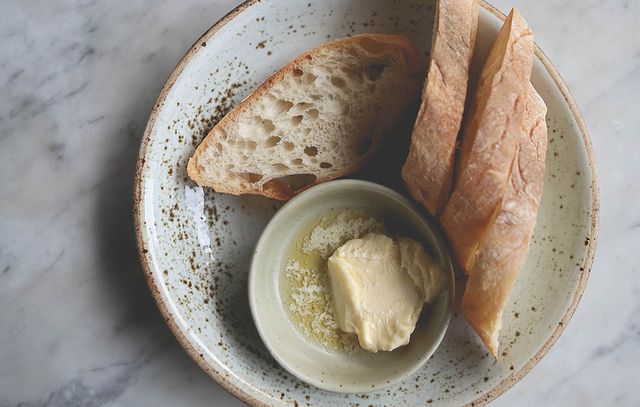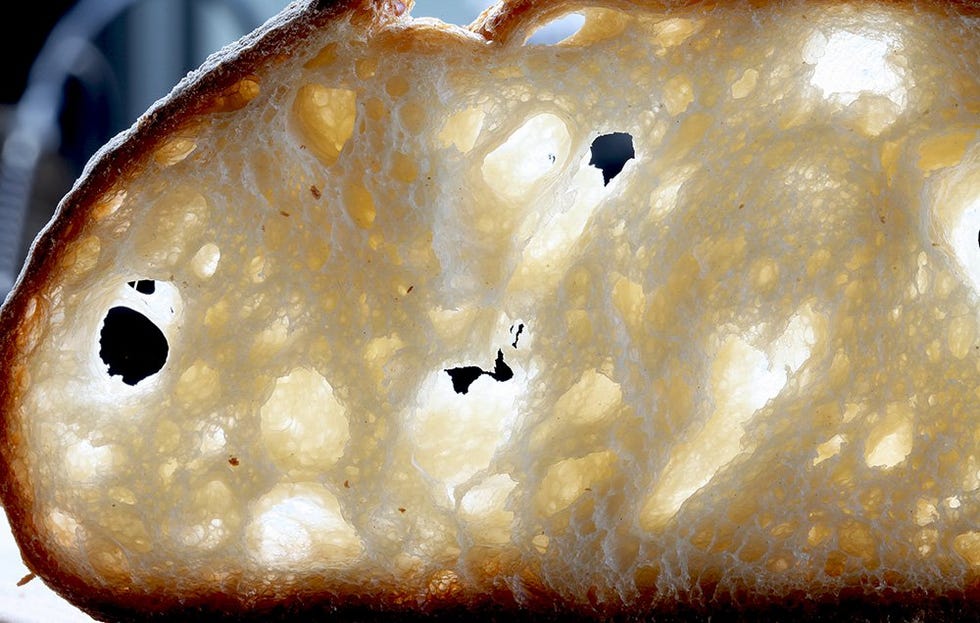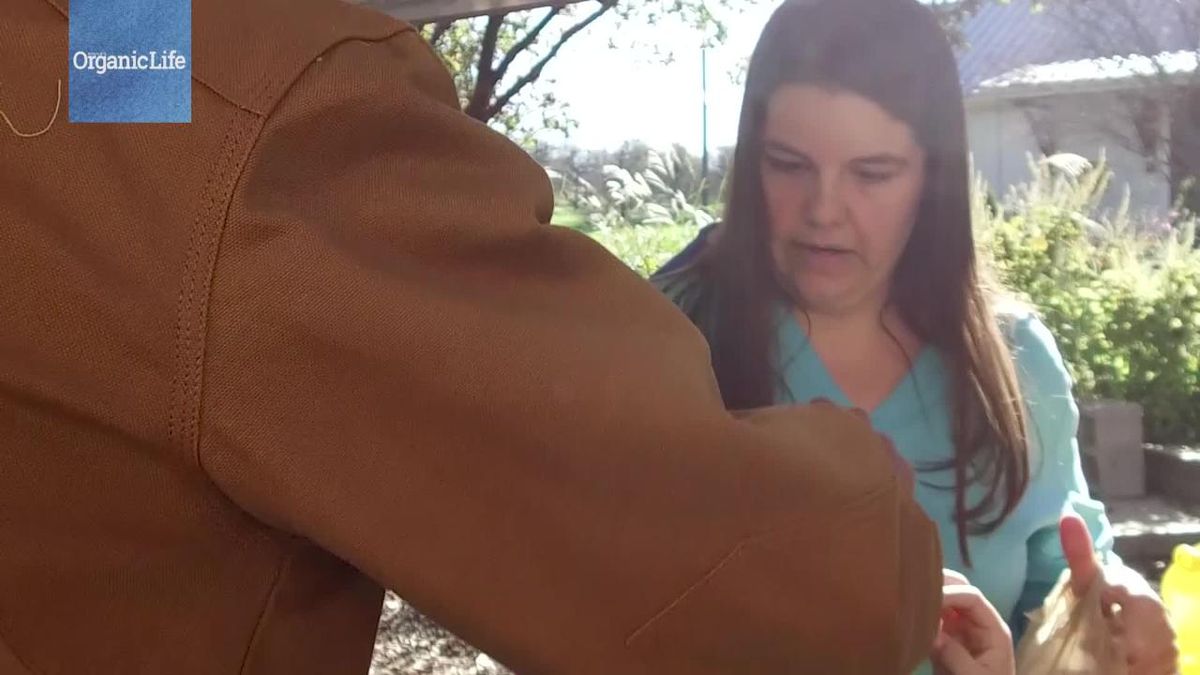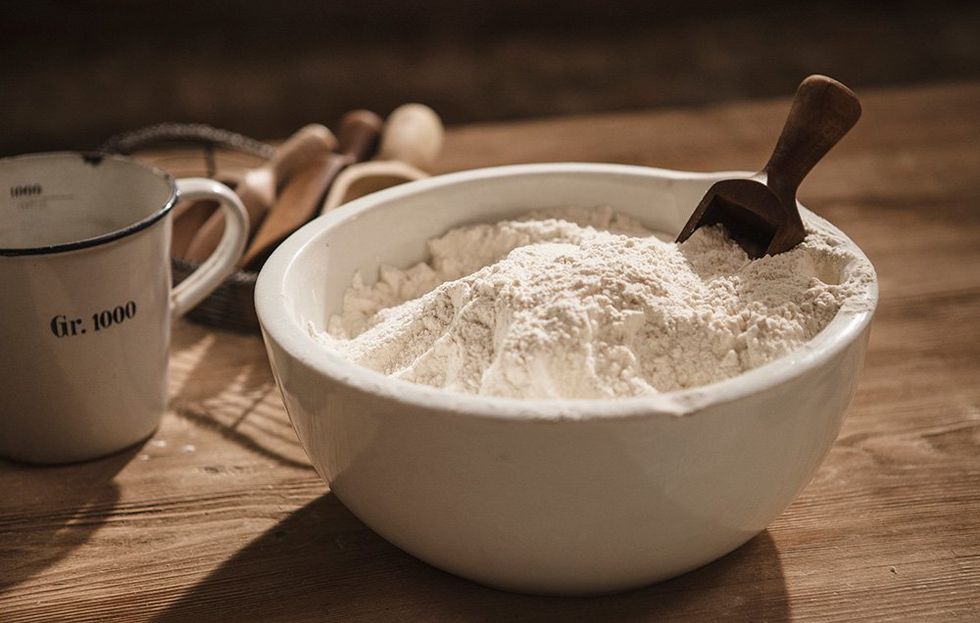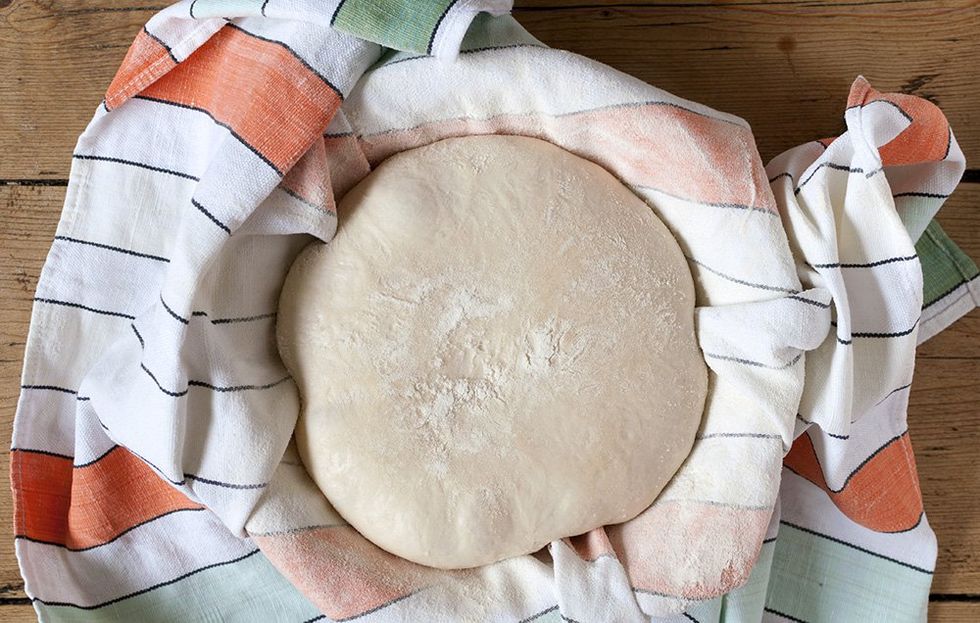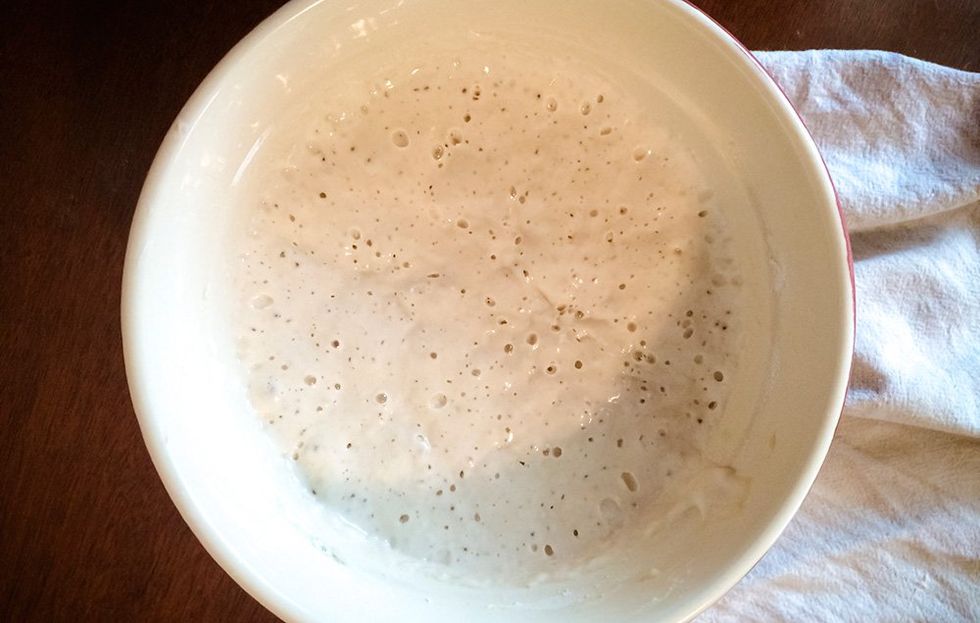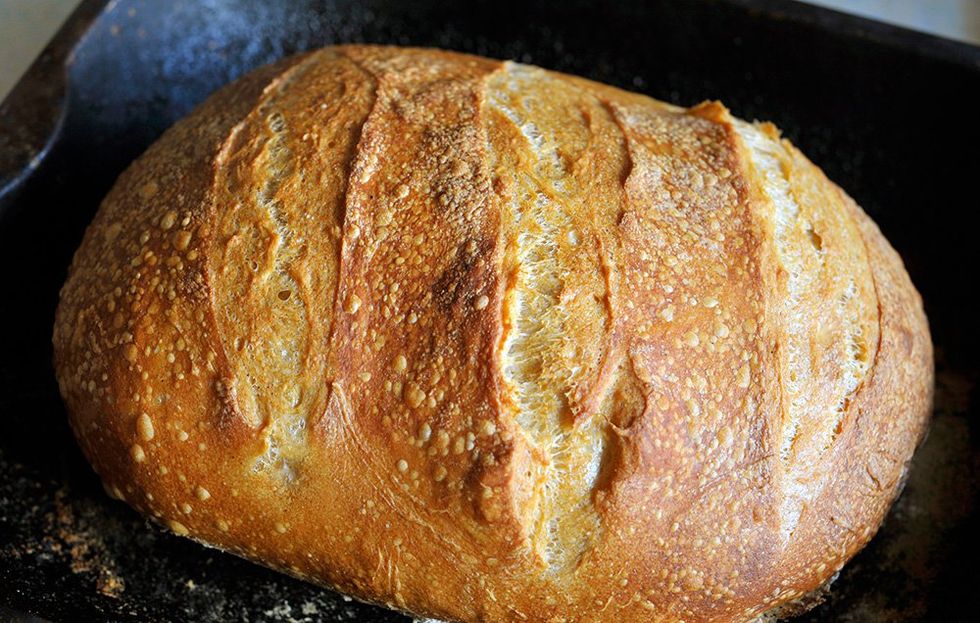This story originally appeared on Rodale’s Organic Life in January 2018.
Listen. Forget the resolutions this year to organize your life, to get up at 5am and go to the gym every day, to forego carbs or wine or chocolate or any of life’s other little pleasures. 2017 was rough; we all need a break. Here is a resolution you’ll actually keep: start making your own bread.
Resolving to make more bread is a relatively small (and fun!) action you can take in the new year with a cascade of benefits: It’s better for you. It connects you to your food. The process is an excuse to slow down and be more present. And the taste is incomparable—even the worst, most mangled loaf out of your own oven is still worlds away from anything you can buy in a store.
Fortunately, it’s not that hard to get a starter going and make homemade, naturally leavened bread a regular part of your life. There’s room for every kind of baker here—from the folks who want to nerd out on flour percentages to the people that aren’t interested in doing much beyond eating a loaf of freshly made bread every week (hi). Here’s why and how to get started.
WHY YOU SHOULD MAKE YOUR OWN BREAD
It’s better for you.
Some of the stuff you might find if you pick up a loaf of bread off the shelf: soybean oil; soy protein concentrate; dextrose or other added sugars; dough conditioners; preservatives; all of the vitamins they removed from the flour that have to be added back in. Here’s what goes into bread made from your own sourdough starter: Flour. Water. Salt. And the yeast that’s already in the air, on your hands, and on the grain.
Besides the obvious benefit of not consuming a bunch of stuff you can’t pronounce, there’s some evidence that naturally fermented bread has a lesser impact on blood sugar, a greater availability of nutrients, and that it may be easier to digest. (Read more about why people with gluten-sensitivities can still eat fermented bread.)
This last point is borne out by the experience of Evrim Dogu, a bread obsessive who mills his own flour and bakes naturally leavened breads at Sub Rosa, his wood-fired bakery in Richmond, Virginia. “Many, many people have very specifically said that they can’t eat any other bread,” he says. “I’m obviously speaking as a baker of naturally leavened breads—not as a nutritionist or dietician. But in general, in terms of experimentation in my own life and the reports we’ve gotten from hundreds of people over the years, fermented foods aid digestion.”
Check out the story of how switching to organic food drastically improved this boy’s autism symptoms:
It’s really cheap.
One loaf of crusty bread at your local shop will generally set you back as much as an entire bag of flour—your only expense when you’re making it yourself. Enough said.
You can make anything you want.
The customization possibilities when you have control over the process and ingredients are endless: swap in whole wheat flour for white, or try flours made from other grains like einkorn or spelt. Add in herbs, cheeses, nuts, or whatever else strikes your fancy: you can’t imagine a better breakfast than a slice of homemade cinnamon raisin bread topped with fresh ricotta or a swipe of peanut butter. Experiment. (Have a gluten allergy? Here’s how you can make gluten-free sourdough bread.)
It puts you in touch with your local community.
One of the best things about making your own bread is the opportunity to use locally milled flour. Dogu sells flour from his own mill to any home bakers that ask, and he recommends checking with your local bakeries to see if any of them do the same. Not only will you be supporting a local business and lessening the carbon footprint of your bread, but freshly milled flour simply tastes better. “A lot of flour is shelf stable because they take out the germ and the bran,” he says. “The germ is where you have all your oils, so it’s the most aromatic component. I think that you get a bolder flavor [with freshly milled flour],” he says. “The moment you crack [the wheat berry] open, it begins degrading the same way that a nut does.” (Take it one step further and grow ancient grains in your backyard.)
But, he notes, it’s absolutely not required if local flour is a challenge to acquire. “I don’t want to intimidate [anyone],” he says. When he began baking, he notes, “I was just buying King Arthur flour and trying to find whole wheat whenever I could. I still think that that is awesome.”
The ritual is a balm.
Yes, baking your own bread takes time. But consider that the process is an invitation to slow down, to put aside the to-do list for a moment and spend some time getting reacquainted with the present. Spend a Sunday afternoon the way it’s meant to be enjoyed: slowly, lazily. Get your bread going, then relax while it rises (or do laundry, if you must).
“Oftentimes in the new year we’re looking for ways of getting back on track or whatever,” Dogu says. “One of the nicest things about a sourdough starter is it’s just like a pet or something that enforces a ritual or rhythm in your life. It’s a nice thing. Once you get into the rhythm of it, the making is all just details.”
Convinced? Here’s how to get started.
HOW TO START MAKING YOUR OWN BREAD
Get a starter going.
Having a scale makes things easier, but you can go by volume, too. “The easiest thing to do is take a cup of water, a cup of flour—half a cup of whole wheat or whole rye and half a cup of all-purpose—mix them together, leave them with plastic wrap over the top of a stainless steel bowl,” Dogu says. “Try to use good clean water, good spring water, something with minerals in it—you’re thinking of life; you want to create something alive that’s going to ferment.”
Feed it regularly for a few days.
“Feed it in the morning or last thing before you go to bed so it’s on a 24-hour cycle. Keep it in a relatively warm place; it doesn’t have to be really warm, just not cold. And then every 24 hours—here’s the part that freaks people out—every 24 hours discard 90% and then replace the same amount,” he says, which will provide fresh food for the yeast. What to do with the discard? Use it for pancakes, Dogu says, or “feel good about composting it.”
Feed your starter daily—equal parts flour and water—for at least a week or so. Once it’s gotten going, you can store it in the fridge and decrease the feedings to about once a week, if you prefer—a nice option if you don’t bake often or if you’re headed out of town. A few days before you want to make bread, pull it out of the fridge and start feeding it every 24 hours again. (Personally, I’ve left my own starter, Sir Mixalot, neglected in the back of the fridge for weeks at a time, and he always bounces back, but your mileage may vary.)
If you do kill your starter, or you open it up and it smells bad, or looks moldy—throw it out and start over. “It shouldn’t smell off,” Dogu says. “It should smell strong, maybe a little yeasty, maybe musky.” If it smells alcoholic and you notice a grayish liquid on top, that’s hooch, the alcohol that settles on top of an overly fermented starter. “If you see hooch,” Dogu says, “that means you forgot about it for a week and you left it and it started fermenting. If you get that, just pour it off and feed it.”
Use it to make bread.
There are thousands of recipes out there; this simple King Arthur recipe is a great place to start. (When I bake it, I like to pour a little boiling water into a hot pan when I first slide it in the oven, to create steam—the secret to a really beautiful crust.)
For more:
There are thousands of bread recipes and books available, any of them can expand your knowledge. “I would say, do what’s most accessible that gets you into it the fastest,” Dogu says. “There are tons of good books out there; you can pretty much grab any of them that are recommended by your local bookseller. They all have something to offer.”
As for my own bread baking practice? Sir Mixalot has been very patient with how I’ve treated him in 2017—feeding him irregularly, letting him sit too long in the fridge—and has given me some beautiful loaves of bread in spite of it. But in 2018 I’ve resolved to attend to him more regularly and start baking a loaf or two every weekend—maybe I’ll even treat him to some local, Sub Rosa-bakery-approved einkorn flour.
